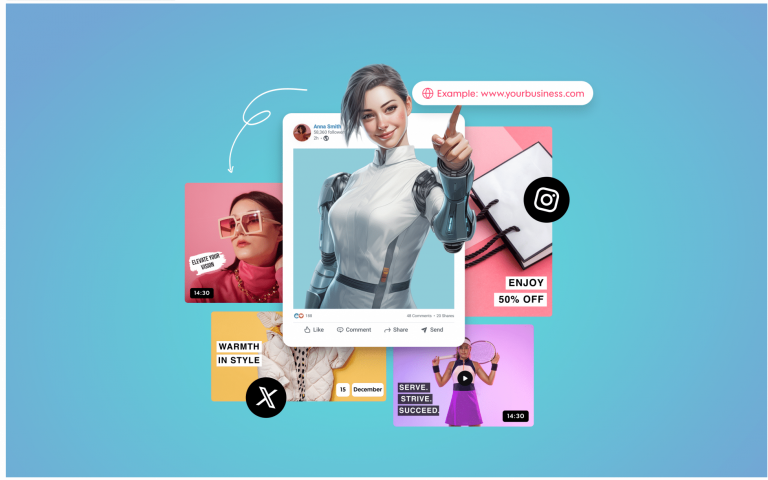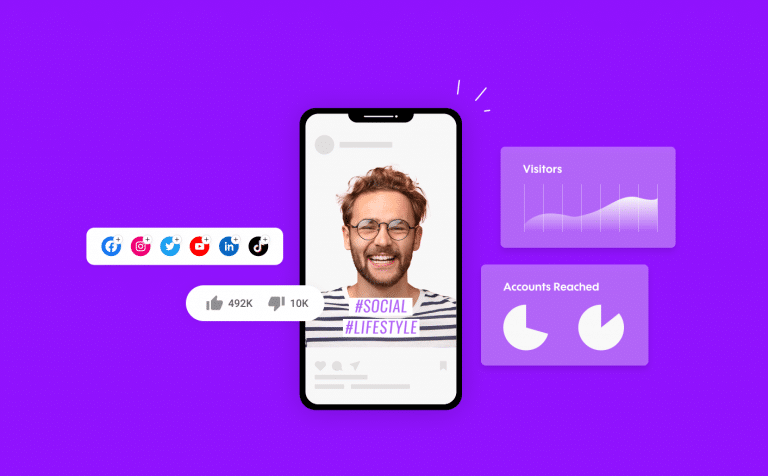
Influencer Marketing on a Budget
A study by Relatable found that 79% of brands plan to set aside an influencer marketing budget for 2019. That’s not all. 62% of respondents in the study also plan to increase that budget. These numbers clearly show that brands realize the importance of having a dedicated budget for influencer marketing. But does that mean they’ll execute more effective campaigns?
Setting aside funds for influencer marketing doesn’t always guarantee that you’ll get the most out of your campaigns. The size of your budget doesn’t solely determine the results of your campaigns either. How you allocate those funds to different aspects of your campaign will make all the difference.
That said, it’s particularly important to properly plan your campaign and fund allocation process when you’re working on a tight budget. That’s exactly what this post is going to address. Read on to learn how you can execute effective influencer marketing campaigns on a budget. Furthermore, using a cost-effective and professional-level video maker, like Promo.com, will help you add pizazz to your videos including subtitles, music, and more – on a budget.
Set measurable goals to track your campaign
Effective influencer marketing is all about recurrent campaign tracking, just like every other marketing strategy. This will help you keep an eye on what’s working and what isn’t. Then you won’t have to keep throwing away your funds on something that’s ineffective.
In other words, you can better ensure that you’re only using your influencer marketing budget on the most effective tactics and influencers.
For instance, it wouldn’t be wise to keep throwing influencer parties if you’re not getting anything out of them. Measuring the buzz around your brand after a party will give you an idea whether it made a significant difference for you.
But to track your campaign, you’ll need to know what to track it against. That’s why you should set clear and measurable goals for your influencer marketing campaign. Your goal could be from boosting brand awareness to driving sales for a certain product line.
You could even have multiple sub-goals for your campaign depending on what your brand needs at that moment. Once you have a clear goal in mind, you’ll need to identify the metrics that are relevant to that goal. For example, a brand that wants to boost brand awareness will measure metrics like social media impressions, traffic growth, follower growth, etc.
While your performance metrics will differ according to your goal, you can look at what metrics other brands are using just to get an idea. According to the previously-cited Relatable study, the most experienced marketers typically use engagement or clicks to measure their campaigns when the main goal is to raise awareness.
A study by Linqia backs up this finding, with 90% of marketers in their study using engagement to measure their campaigns. Clicks, impressions, conversions, reach, and product sales are other important metrics that you can track.Image Source: Linqia
Besides this, you should also consider tracking your search engine rankings. See if all of the content created by influencers and all of the traffic they’re generating for you have an actual impact on your rankings.
You can use tools like Pro Rank Tracker for this. It can help you measure any changes in your rankings before and after the campaign. The tool even lets you track the rankings of your videos on Google Videos. So if your influencer marketing campaign includes video content, this tool can help you measure how much of an impact it made.
For measuring the rest of your KPIs, you can use platforms like Grin. This tool lets you track virtually ever influencer marketing KPI possible – right from revenue and conversions to impressions and engagement. Plus, you can easily keep track of your spending by setting your budget and measuring the cost of each metric.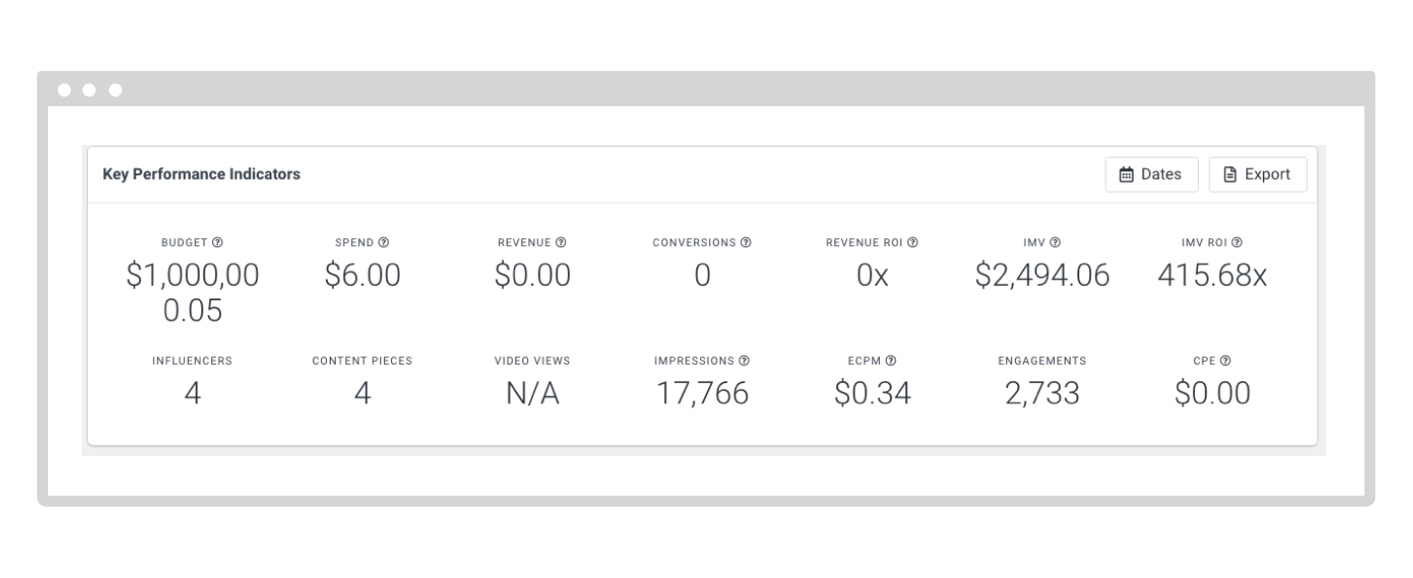 Image Source: Grin
Image Source: Grin
Choose a cost-effective and relevant platform
As you already know, you have the option to launch your influencer marketing campaign on different social networks. However, based on your niche, not all social media platforms may be ideal for you. You should also consider the fact that the cost of sponsored posts varies by platform. This is mainly affected by the kind of impact they can generate and the amount of work needed.
Blogs and video content take longer to create, so they cost a lot more than social media posts. According to Dummies.com, Instagram sponsored posts start at around $75 each while a sponsored blog post would cost you around $175 minimum. Sponsored video content starts at around $500. But the cost will also vary according to the number of impressions, followers, and subscribers.
Here’s how Buffer suggests you calculate the cost of sponsored content:
- Instagram – $10 for every 1000 followers or $250 to $750 for every 1000 engagements
- YouTube – $20 for every 1000 subscribers or $50 to $100 for every 1000 video views
Influencer marketing on LinkedIn is slightly different from other social networks in terms of content and audience type. So it’s mostly used by B2B companies rather than B2C brands. So the difference in cost would mainly be influenced by the type of content your influencers create for you.
There’s not much information available on how much influencers charge on the platform either. So you’ll need to refer to the rate charts given above and use them as a baseline to calculate the cost of influencer marketing on LinkedIn.
For instance, consider the average sponsored blog post rates if you’re getting a LinkedIn influencer to write a LinkedIn Pulse article for you and refer to the average cost of creating a sponsored video if you want the influencer to create sponsored video content.
The cost may also vary among different types of influencers and niches. Some influencers may even create content for you in exchange for free products, but that’s not always the case. So in addition to choosing a platform that’s relevant to your niche, consider which among them will cost the least.
And don’t forget to try to align your campaign with your existing social media marketing strategy. Otherwise, you could end up spending double on a certain marketing tactic that’s included in both strategies. Aligning your social media marketing and influencer marketing efforts will help you avoid this.
Pro tip: Wondering how much money you can make on YouTube? Use our YouTube Money Calculator to hone in on your potential. Just show us some of your numbers and we’ll give you estimated daily, monthly, and yearly earnings.
Narrow down the perfect influencers
There’s nothing more wasteful than spending your money on influencers who aren’t right for your brand. That said, finding the right influencers is still a big obstacle for brands and marketers. Four out of ten marketing teams in the Relatable study consider it to be a challenging endeavor. So you need to take extra care to narrow down on the perfect influencers for your brand.
This isn’t just about the number of followers an influencer has. You will have to consider factors like which niche they belong to and whether they can reach your target audience. Consider their engagement rate to see whether they can really engage their followers. And obviously, you’ll also need to consider how much they charge to create sponsored posts and see whether they fit your budget.
If you’re on a tight budget, micro-influencers may be the perfect addition to your campaign. That’s because they often have a highly engaged audience whose trust they have earned through honest and valuable content. So even if they don’t have a huge following, whatever following they have gained is made up of people who are genuinely interested in their content.
To top it all off, their rates are much lower and you may even be able to strike up a deal with free products. This will typically work only when they’re true fans of your brand, so it’s crucial that you nurture the relationship.
Traackr is an excellent tool to get in-depth insights into an influencer’s audience. It can help you see just how relevant they are to your target audience. It’ll also help you understand important audience demographics like age, occupation, gender, and location. You can even view the likes and interests of their audience, the hashtags most popular among them, and which brands they like themselves.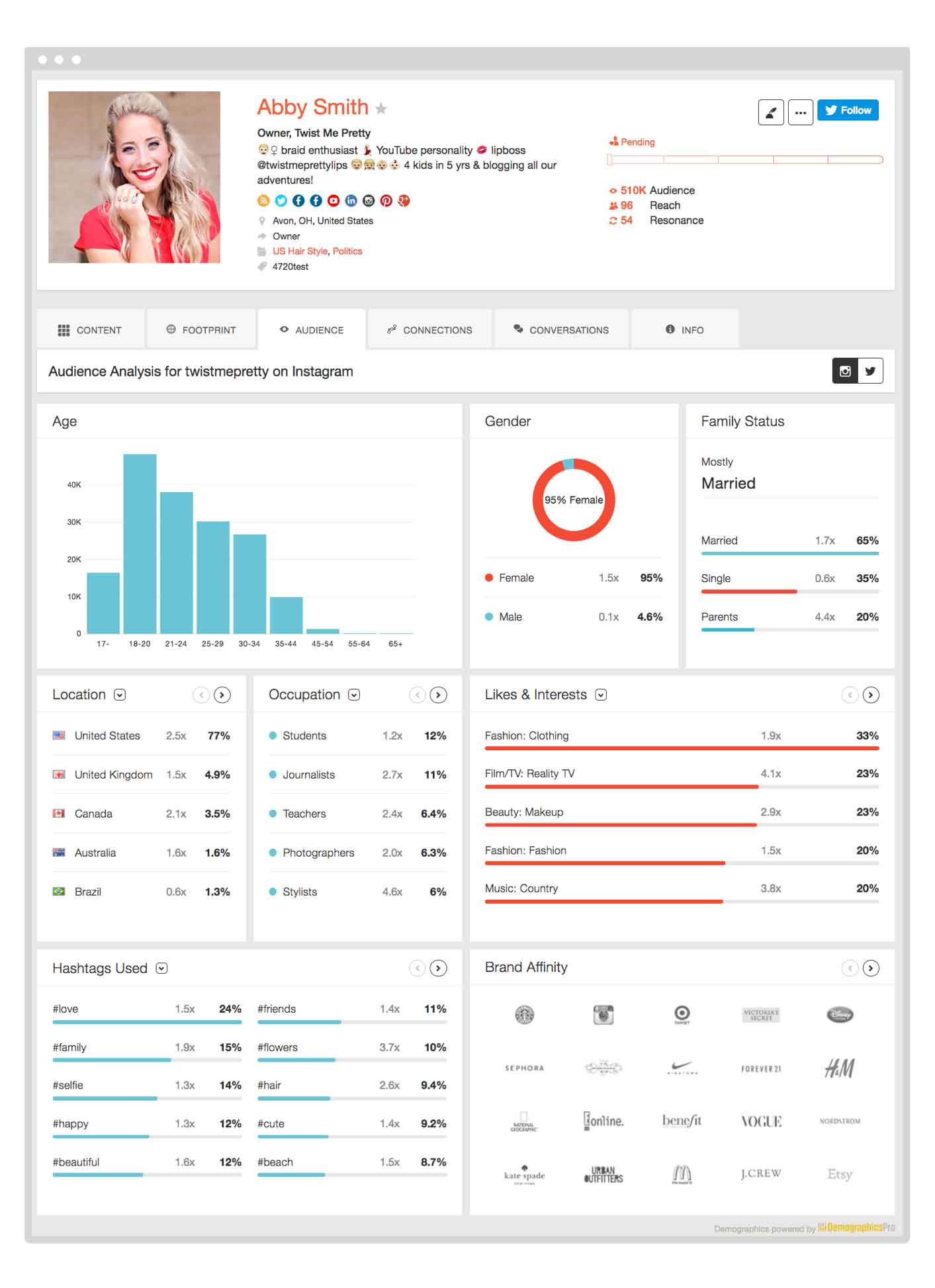 Image Source: Traackr
Image Source: Traackr
Besides this, you can also use Influencer Fee to get a fair idea of how much an influencer is likely to charge for their sponsored posts. This tool will consider important metrics like the number of followers they have and the average engagement rate per post to give you a realistic estimate of earnings per post.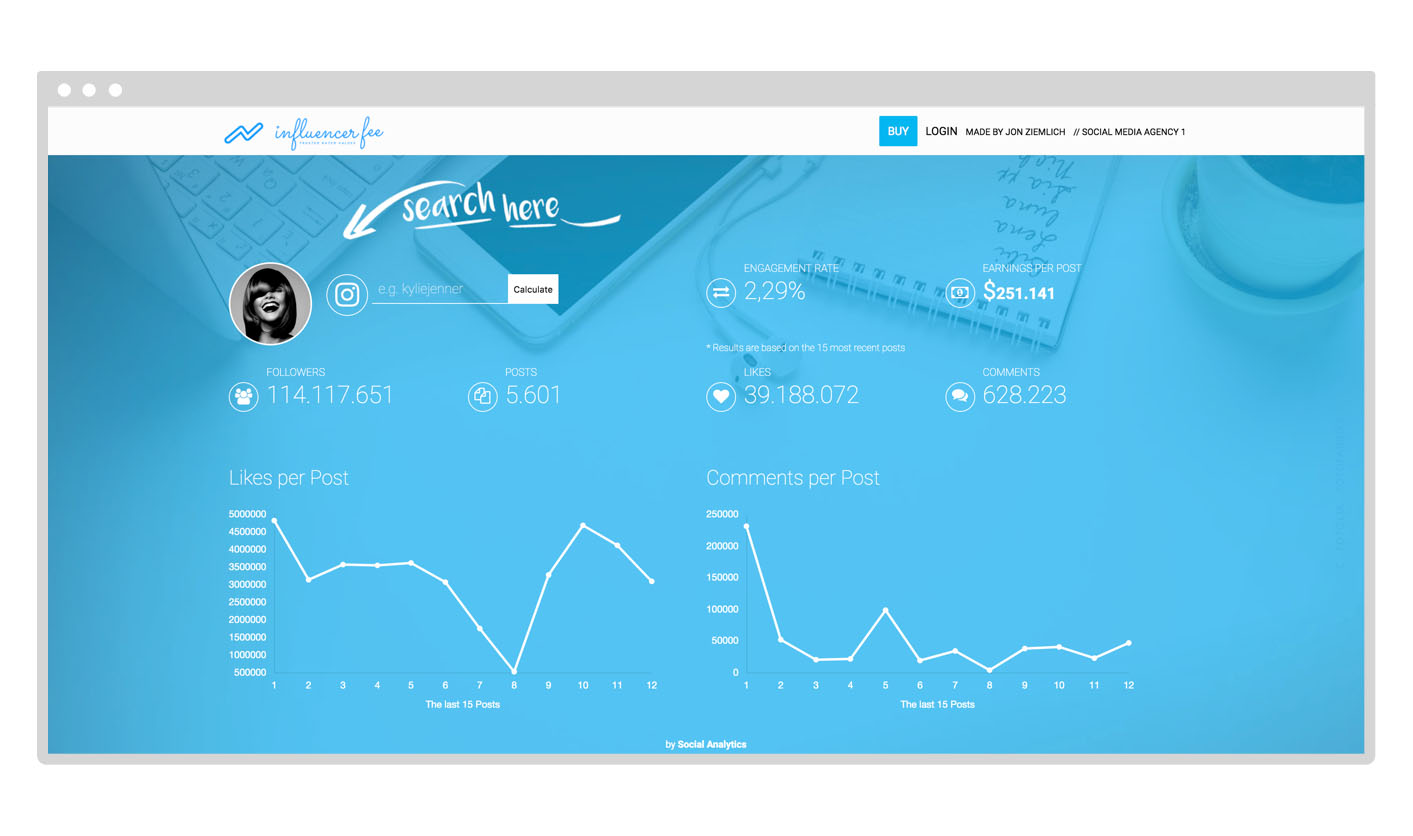 Image Source: Influencer Fee
Image Source: Influencer Fee
Filter out ineffective performers
No matter how careful you are in the influencer vetting process, you could still end up working with influencers who don’t deliver the expected results. This may be alarming to you when you’ve done all you could to make sure the influencer is right for you. In addition to their audience size and niche, you also took the time to analyze their engagement rate and content quality.
But there’s nothing you could have done to avoid that because there’s a chance you’ve come across a fake influencer. Fake influencers are people who decided to take a shortcut to becoming an influencer. They buy fake followers, comprised of bot accounts and fake accounts, to build a façade of being more influential than they actually are.
Sometimes, you can filter these influencers out by comparing their engagement rate to their audience size. If they have a huge following but not much engagement, there’s a chance that they’ve bought fake followers.
But some even go so far as to buy fake likes and comments and build up fake engagement to impress brands. That’s when you run into the trouble of recruiting influencers who check all the boxes but don’t really deliver much results.
That’s exactly why you need to run a recurring analysis on the individual performance of influencers while your campaign is running. This will help you weed out ineffective performers so you can spend your influencer marketing budget only on influencers who deliver. It’ll also help you nurture your influencer relationships with the top performers for long-term impact.
The previously-mentioned Grin platform lets you keep track of the activities of individual influencers and how their content is performing. You’ll even be able to keep track of how much you’re spending on each influencer and how much revenue they’re generating for you. This makes it much easier to identify your top performers and your least effective performers.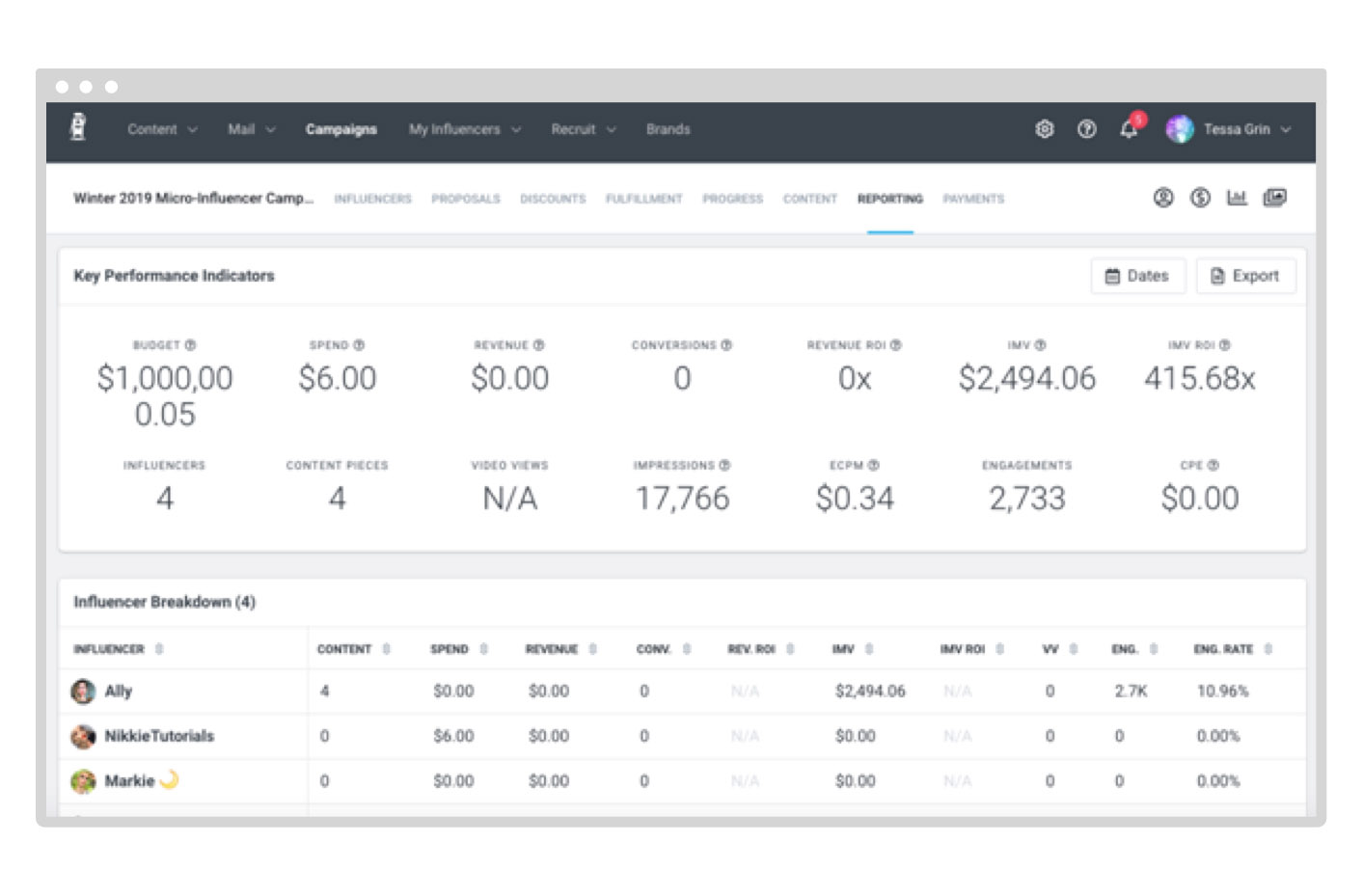 Amplify and repurpose influencer-generated content
Amplify and repurpose influencer-generated content
When you’re on a limited budget, you need to make sure that you get the most out of every dollar you spend. So although you may want to run recurring campaigns, you should first focus on how to get the most out of the influencer-generated content from your first campaign.
This goes beyond just having them create the content. Find a way to reuse the content they’ve created for you in your content marketing efforts.
Perhaps you could share the content as user-generated content on your social media profiles or product pages. Or you could create a specific landing page on your site to curate influencer testimonials and other UGC. You could even repurpose the content into ads that are likely to win the trust of your target audience.
That way, you won’t have to keep paying influencers to create fresh content for a while. You can just reuse the content they’ve already created. Another solution is to amplify the content created by influencers. This involves paying to promote their content on social media so that it drives an even bigger impact.
All of this can significantly reduce your content marketing spend while delivering impressive results. Take a look at how Califia Farms repurposed a recipe created by the foodie influencer @asassyspoon for their Instagram profile. Image Source: Instagram
Image Source: Instagram
But make sure you have an agreement with the influencer before you reuse or promote their content. Even if they created the content for you, they’re still the owners and creators. And reusing it without their permission could ruin your influencer relationships. Make sure your initial contract clearly states details of content ownership and reusing permissions.
Conclusion
These tips can help you plan and track your influencer marketing campaigns on a budget. They are especially important for businesses that have a limited digital marketing budget but still want to get impressive results with the help of influencers. However, you can also use these tips, even if you have a much bigger budget.
Use these tips regardless of whether you’re a small or big business. If you want to drive better ROI from your digital marketing and influencer marketing campaigns, this is a great place to start.

